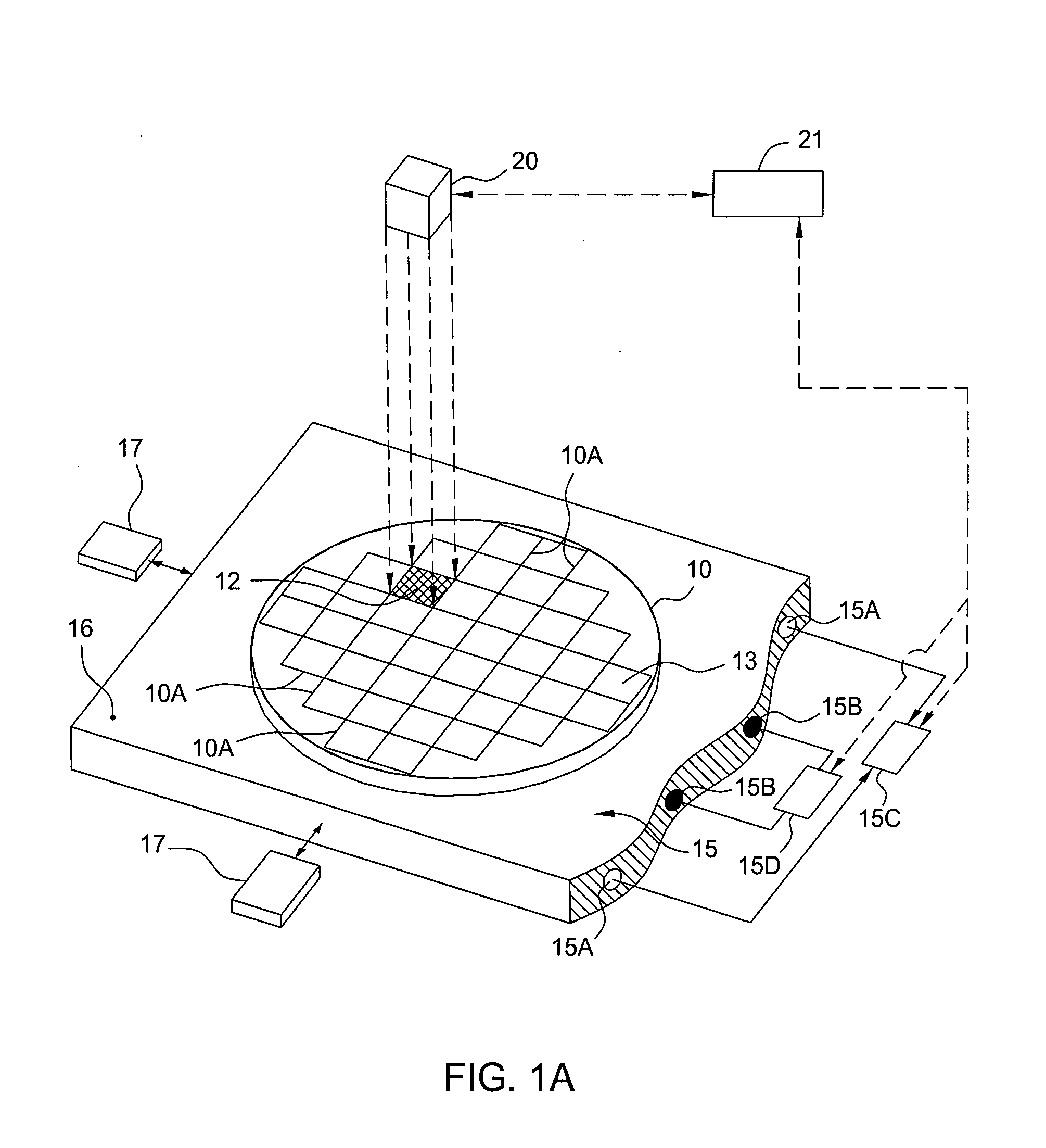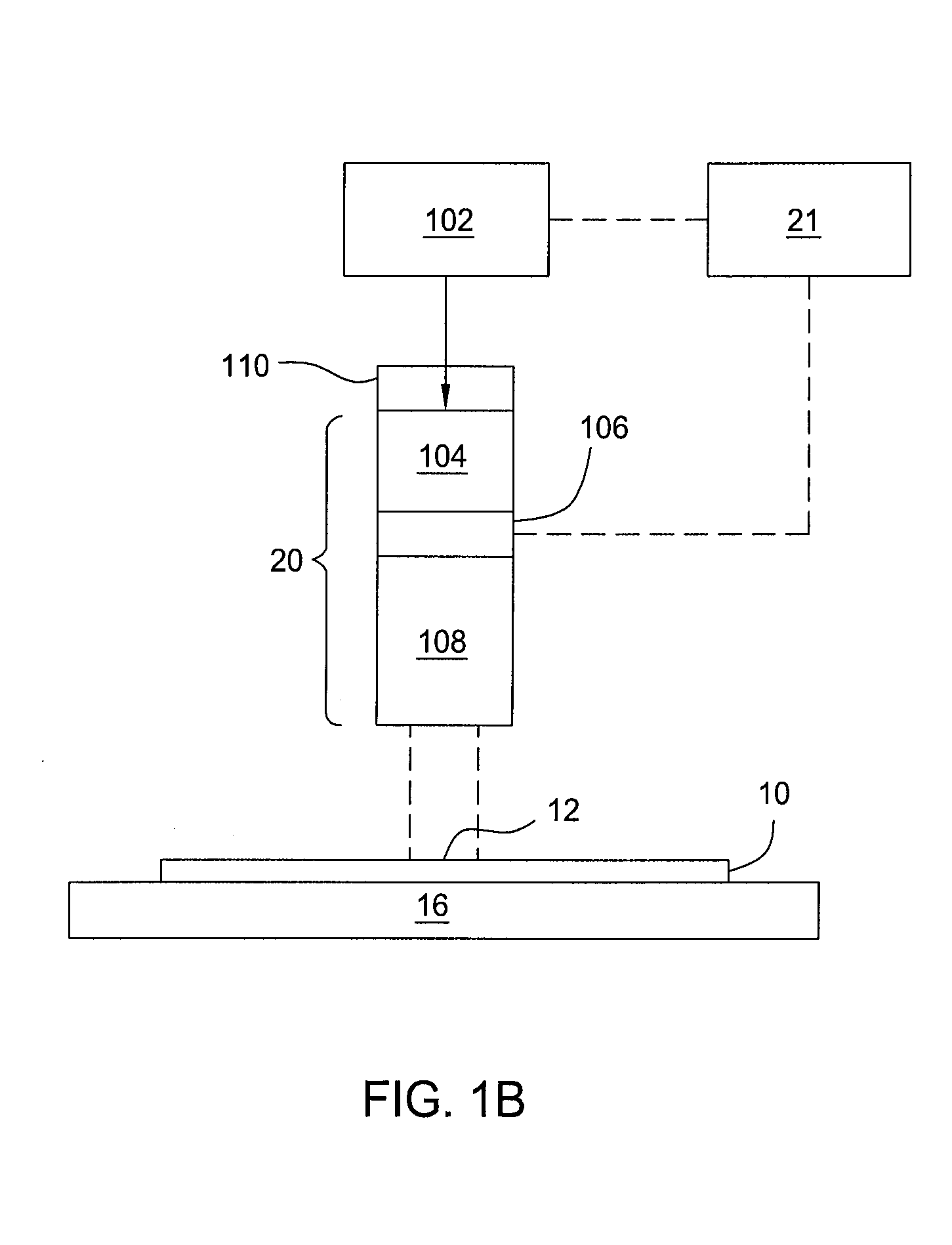Pulse train annealing method and apparatus
a technology of annealing method and annealing apparatus, which is applied in the direction of manufacturing tools, lighting and heating apparatus, furniture, etc., can solve the problems of increasing switching speed, unsatisfactory processing, and increasing problems
- Summary
- Abstract
- Description
- Claims
- Application Information
AI Technical Summary
Benefits of technology
Problems solved by technology
Method used
Image
Examples
examples
[0107]PTA treatment of a 200 Angstrom junction layer would be expected to yield useful results. After implanting with a dose of 1015 dopant atoms at an energy of 250 eV, 1000 pulses of 532 nm laser light may be delivered in a train of pulses. With each pulse delivering an energy density of 0.3 J / cm2, duration of about 1 msec, and separated by a rest duration of 30 msec, sheet resistivity of the junction after annealing is expected to be less than about 400 Ω / cm2. The same instance with implant energy of 500 eV is expected to achieve sheet resistivity after annealing generally less than 200 Ω / cm2.
[0108]For example, after implanting with a dose of 2×1015 boron atoms from an octadecaborane precursor at an energy of 250 eV, PTA treatment was performed with 30 20-nsec. pulses of 532 nm laser light delivered to a substrate at 5 pulses per second, each pulse carrying approximately 150 millijoules (mJ) of energy at a density of 0.234 J / cm2, resulting in resistivity of 537 Ω / cm2 following PT...
PUM
| Property | Measurement | Unit |
|---|---|---|
| power | aaaaa | aaaaa |
| peak temperature | aaaaa | aaaaa |
| temperature | aaaaa | aaaaa |
Abstract
Description
Claims
Application Information
 Login to View More
Login to View More - R&D
- Intellectual Property
- Life Sciences
- Materials
- Tech Scout
- Unparalleled Data Quality
- Higher Quality Content
- 60% Fewer Hallucinations
Browse by: Latest US Patents, China's latest patents, Technical Efficacy Thesaurus, Application Domain, Technology Topic, Popular Technical Reports.
© 2025 PatSnap. All rights reserved.Legal|Privacy policy|Modern Slavery Act Transparency Statement|Sitemap|About US| Contact US: help@patsnap.com



